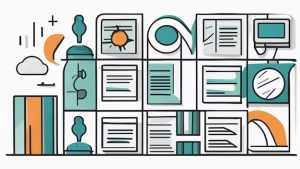Mortgage Refinancing Strategies in a Rising Interest Rate Environment

With interest rates on the rise, homeowners who have a mortgage are starting to feel the pinch. Higher interest rates mean higher mortgage payments, which can put a strain on a household budget. However, there are ways to manage these increased costs by refinancing your mortgage. In this article, we will explore some mortgage refinancing strategies that can help homeowners manage their mortgage payments in a rising interest rate environment.
1. Refinance to a fixed-rate mortgage

One of the most effective ways to manage rising interest rates is to refinance your mortgage from an adjustable-rate mortgage (ARM) to a fixed-rate mortgage. A fixed-rate mortgage has a set interest rate for the life of the loan, which means that your monthly mortgage payments will remain the same, regardless of interest rate fluctuations. Refinancing to a fixed-rate mortgage can provide peace of mind and stability in a rising interest rate environment.
2. Shorten the term of your mortgage
Another way to manage rising interest rates is to refinance into a shorter-term mortgage. For example, if you currently have a 30-year mortgage, you may consider refinancing into a 15-year mortgage. While your monthly payments will be higher, you will pay off your mortgage faster and save money on interest in the long run. Shortening the term of your mortgage can also provide a hedge against rising interest rates, as you will be paying off your mortgage faster.
3. Refinance to a lower interest rate
When interest rates rise, it can be a good time to refinance your mortgage to a lower interest rate. Refinancing to a lower interest rate can help you save money on your monthly mortgage payments and overall interest costs. To determine if refinancing to a lower interest rate makes sense, you will need to calculate your break-even point. This is the point at which the cost of refinancing is recouped through the monthly savings on your mortgage payments.
4. Consider cash-out refinancing
Cash-out refinancing can be an option for homeowners who have equity in their homes and need to access cash to pay off high-interest debts or make home improvements. With cash-out refinancing, you refinance your mortgage for more than the amount owed and receive the difference in cash. While this can be a good way to access cash, it is important to weigh the costs and benefits of cash-out refinancing carefully.
5. Work with a mortgage professional
Finally, it is important to work with a mortgage professional who can help you understand your options and make informed decisions about refinancing your mortgage. A mortgage professional can help you determine which refinancing strategy is best for your financial situation and guide you through the refinancing process.
- Refinancing to a fixed-rate mortgage can provide stability in a rising interest rate environment.
- Shortening the term of your mortgage can provide a hedge against rising interest rates.
- Refinancing to a lower interest rate can help you save money on your monthly mortgage payments and overall interest costs.
- Cash-out refinancing can be an option for accessing cash, but it is important to weigh the costs and benefits carefully.
- Working with a mortgage professional can help you make informed decisions about refinancing your mortgage.
Rising interest rates can be a cause for concern for homeowners, but there are strategies that can help manage these increased costs. Refinancing your mortgage can be an effective way to manage rising interest rates, but it is important to understand your options and work with a professional to make informed decisions. By following these mortgage refinancing strategies, homeowners can navigate a rising interest rate environment with confidence.







